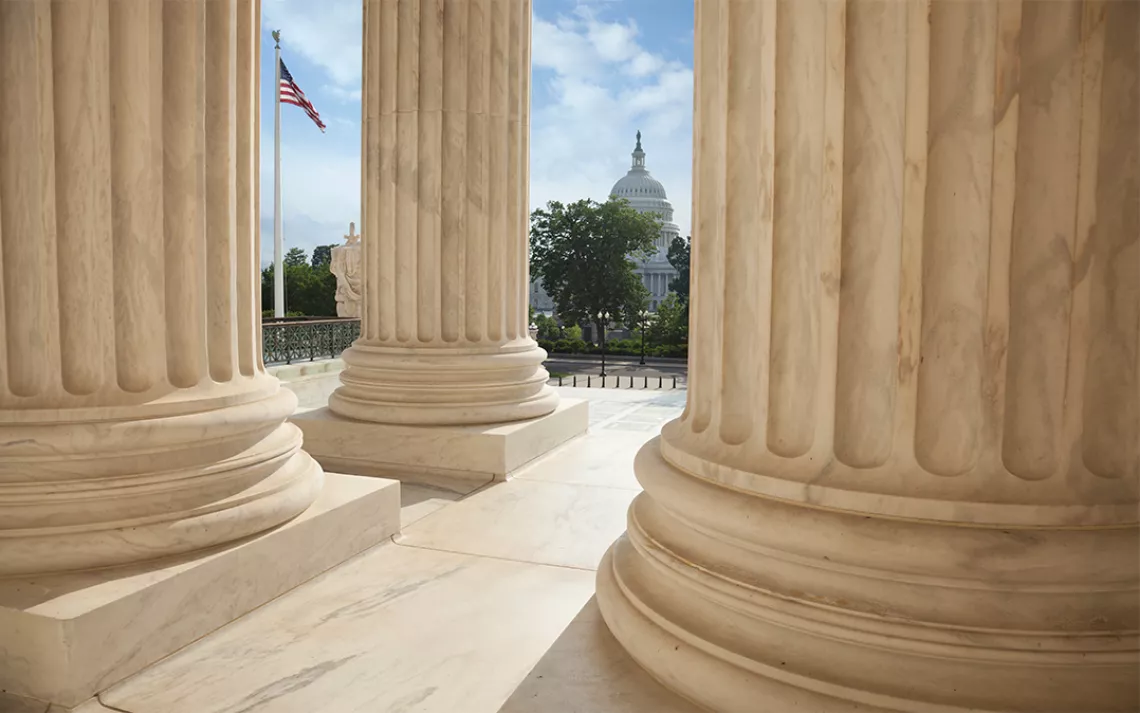Neil Gorsuch’s Family Has a Checkered History When It Comes to Environmental Protection
Trump’s Supreme Court nominee could enact revenge against the EPA

Photo by Willard/iStock
Neil Gorsuch, who won the rose from President Donald Trump as one of two finalists for a Supreme Court nomination, is a deeply conservative choice in the mold of the late Antonin Scalia. He is also the poisoned fruit of a partisan refusal to hold confirmation hearings on Judge Merrick Garland, who was President Obama’s nominee for Scalia’s vacant seat. That constitutional hostage drama played out very well for the hostage takers. If Gorsuch is confirmed (something that the Sierra Club and groups across the progressive movement have vowed to prevent), his ascendance to the nation’s highest court might also play out as a family revenge-drama against U.S. environmental laws.
At the risk of pop psychology, one could argue that, as with Trump son-in-law and White House advisor Jared Kushner—who seems to have put the knife to Trump minion Governor Chris Christie’s ambitions for having sent Kushner’s father to jail for tax evasion and other crimes—Judge Gorsuch’s opinions regarding environmental laws may be a matter of maternal trauma as much as conservative ideology.
Much of the national media has mentioned that Gorsuch’s mother, Anne Gorsuch, had some problems during her brief tenure as EPA administrator. A fuller review reveals a major and traumatic experience that almost certainly would have impacted the outlook of her then-16-year-old son, who had moved from Denver to D.C. with his mother when she was appointed and before she caused the first major scandal of the Reagan administration.
Here’s the backstory: Anne Gorsuch’s appointment was assured after she agreed with Reagan budget director David Stockman that the EPA could easily get along with a 50 percent funding cut. Before she came to Washington, Gorsuch, a Colorado state representative, was already a well-known foe of environmental enforcement, and she brought that worldview with her to the capital. Her chief counsel at the EPA was a lawyer from Exxon, and her chief enforcement officer was a lawyer from General Motors.
In 1981, Anne Gorsuch met with executives from Thriftway Co., a small Southwest gasoline refiner, and told the company representatives that it didn’t make sense to enforce EPA regulations on removing lead from gas, since unleaded gasoline rules were already in the works. After the meeting, she talked with a Senate aide who then caught up with the Thriftway reps and relayed the message that—though she couldn’t tell them to break the law—she hoped they’d gotten the point.
In the fall of 1982, the House Energy Committee requested EPA documents on hazardous waste dumps and questionable Superfund Enforcement decisions. The White House ordered Gorsuch to withhold the documents under “executive privilege.” Rita Lavelle, an EPA staffer who ran the hazardous waste program, took this as a sign to begin shredding scores of subpoenaed documents, including those on suspension of safety rules on waste disposal.
The congressional investigation would go on to find that under Gorsuch, the Superfund program was being transformed into a costly lawyer-subsidy system; illegal private meetings with regulated companies were taking place; closed door deals were being made to reduce fines on polluters; and government appointees were continuing to represent past clients who had ongoing conflicts with the agency. In the midst of this controversy, flooding in the Midwest spread dioxin contamination through the town of Times Beach, Missouri, leading to the emergency evacuation of more than 2,000 residents. As media scrutiny of EPA management intensified, Gorsuch was forced to resign, along with some 20 top appointees. Rita Lavelle eventually served six months in jail for perjury and obstruction of justice.
It seems likely that this harrowing family experience left a lasting mark on Neil Gorsuch. To quote a New York Times editorial, “He is even more conservative than Justice Scalia in at least one area—calling for an end to the deference courts traditionally show to administrative agencies, like the Environmental Protection Agency, that are charged with implementing complex and important federal laws.”
Indeed, one year after Anne Gorsuch was forced to resign, the Supreme Court ruled in Chevron v. NRDC that federal agencies like the EPA should have broad latitude in deciding how to enforce federal law. The so-called Chevron deference has since become a cornerstone of administrative law that underlies federal powers. Neil Gorsuch appears to be a foe of that case law. In an opinion last August, Gorsuch, a federal appellate court judge, expressed skepticism that the courts should defer to government agencies’ interpretation of the laws they are supposed to enforce. If Gorsuch’s ideas were to be adopted by the rest of the Supreme Court, it could cripple the ability of the EPA to safeguard clean air, clean water, a livable climate, and wildlife.
Climate-science denier and oil-and-gas-industry-funded Oklahoma attorney general Scott Pruitt is slated to become the next EPA administrator. Neil Gorsuch could become the 5-4 tiebreaker who will reestablish an antiregulatory, antienvironmental majority on the Supreme Court. The past really does seem to be preamble.
What You Can Do
Oppose Neil Gorsuch, Donald Trump's nominee for the Supreme Court: Neil Gorsuch is outside the mainstream on almost every issue and is unfit to serve. If confirmed, he would serve on the Court for decades, possibly putting the environment, as well as other top issues, at risk for generations. We cannot allow someone so radical to serve on the highest court in the land. Send a message today.
 The Magazine of The Sierra Club
The Magazine of The Sierra Club



